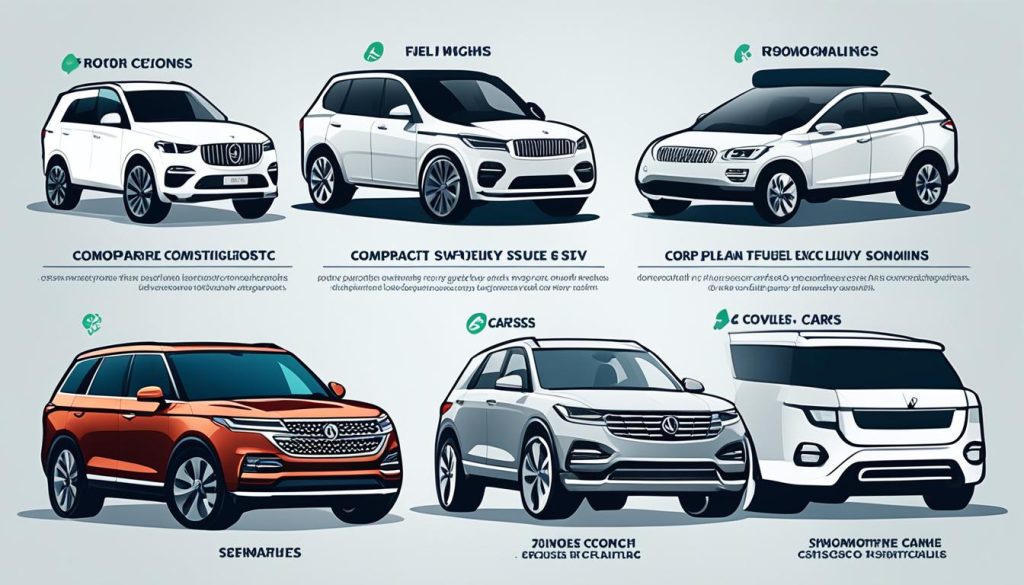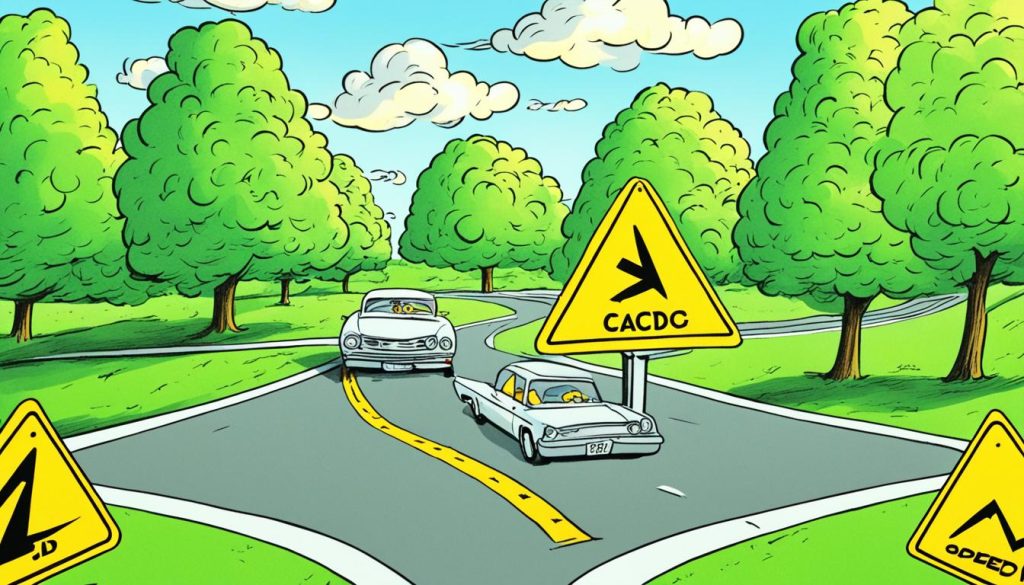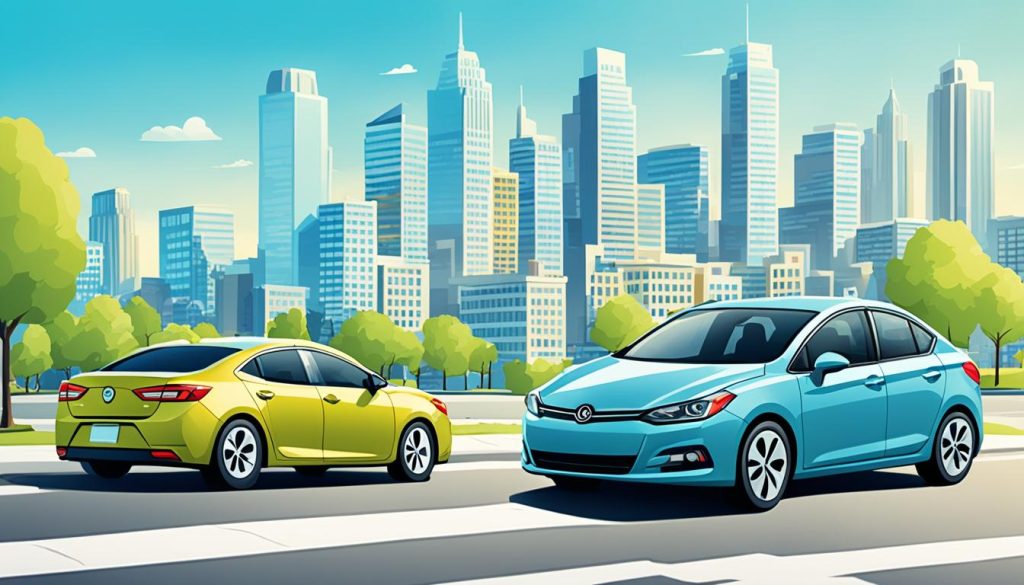When you’re looking for a new car, you have to decide: lease or buy. Each choice has its own benefits and things to think about. These can affect your wallet and how you enjoy driving. It’s key to understand the1 economics of car ownership to pick the best option for you.
Leasing lets you drive a car for 2-4 years without owning it. Buying a car means you either take out a loan or pay cash upfront. You become the car’s owner. Your choice between leasing and buying depends on your budget, how much you drive, if you want a new car often, and your long-term goals.
Key Takeaways
- Leasing usually means lower upfront and monthly costs, but you don’t own the car.
- Buying a car makes you the owner, but you’ll pay more upfront and each month.
- Your budget, driving habits, and goals should help you decide between leasing and buying.
- Think about the financial parts like depreciation, interest rates, and maintenance costs.
- Consider your future needs and if you like the flexibility of leasing or the stability of owning a car.
- Vehicle financing options
- Leasing vs. purchasing cars
- Car ownership costs
- Auto loan interest rates
Understanding the Lease vs. Buy Decision
Choosing between leasing and buying a car affects your wallet. Leasing means you pay monthly to use a car for 2-3 years, then return it. Buying a car means getting a loan and owning it after paying it off2.
Key Differences Between Leasing and Buying
Leasing and buying cars differ in how you own and use them. Leasing has lower monthly costs but you don’t own the car. Buying costs more each month but you own the car and can gain equity2.
Evaluating Your Priorities and Lifestyle
Think about your budget, driving habits, and future plans when choosing. Leasing suits those wanting lower costs and new cars often. Buying is better for those keeping cars long, needing more miles, or wanting equity2.
Let’s look at the costs of a Hyundai Kona and a Ford F-150 in gas and electric versions3.
| Vehicle | Initial Purchase Price | Maintenance Costs (45,000 miles) | Fuel/Charging Costs (45,000 miles) | Depreciation (3 years) | Total 3-Year Ownership Cost |
|---|---|---|---|---|---|
| Hyundai Kona | $22,595 | $4,428 | $5,162 | $9,795 | $19,385 |
| Hyundai Kona Electric | $35,295 | $3,573 | $2,548 | $15,305 | $21,426 |
| Ford F-150 | $40,960 | $4,199 | $8,325 | $13,981 | $26,505 |
| Ford F-150 Lightning | $54,769 | $3,573 | $4,529 | $15,738 | $23,840 |
Electric vehicles cost more at first but save on maintenance and fuel. This can make owning them cheaper over three years3.
Choosing to lease or buy depends on your needs and goals. Think about your situation and the costs to pick what’s best for you23.
The Upfront Costs of Leasing vs. Buying
Getting a new car can cost differently when you lease or buy. It’s key to know these differences to make a choice that fits your budget and what you want.
Down Payments and Acquisition Fees
Leasing a car usually means paying less upfront than buying. You might only need to pay the first month’s rent, a refundable deposit, and maybe an acquisition fee4. Buying a car, however, requires a bigger down payment, often 10% to 20% of the car’s price, plus sales tax and registration fees4.
| Upfront Costs | Leasing | Buying |
|---|---|---|
| Down Payment | First month’s payment, security deposit, acquisition fee | 10-20% of purchase price |
| Sales Tax and Registration Fees | Typically lower | Higher |
Leasing can be more appealing if you don’t have much money saved up or want to spend less upfront4. But, think about the long-term costs of leasing versus buying. Consider how it fits your life and budget.
“Affordability was identified as the biggest factor affecting consumer openness to electric vehicles in the study.”4
Monthly Payment Comparisons
Choosing between leasing or buying a car often comes down to the monthly payment. Leasing usually means lower payments than buying the same car. This is because you’re paying for the car’s depreciation and interest during the lease, plus taxes and fees5.
Factors Affecting Lease Payments
Many things can change how much you pay each month on a lease. These include the car’s sale price, lease length, expected mileage, and its value at lease end5. Knowing these can help you figure out your lease costs and make a smart choice.
Loan Payments and Interest Rates
Buying a car means your payments depend on the sale price, interest rate, and loan length. Higher interest rates mean higher payments, which can greatly affect the car’s total cost6. Your credit score, loan type, and loan length can change the interest rate you get.
| Comparison | Leasing | Buying |
|---|---|---|
| Monthly Payments | Generally lower than loan payments for the same vehicle | Depend on the sale price, interest rate, and loan term |
| Factors Affecting Payments | Sale price, lease term, expected mileage, residual value | Sale price, interest rate, loan term |
| Impact of Interest Rates | Interest rates are included in the lease payment | Higher interest rates result in higher monthly payments |
Understanding what affects payments for leasing and buying helps you make a choice that fits your budget and lifestyle.
But remember, the monthly costs are just part of the story. You should also think about upfront costs, mileage limits, and the perks of owning a car when deciding between leasing or buying756.
The Economics of Car Ownership: Lease vs. Buy
Choosing between leasing and buying a car affects your wallet over time. Buying usually works out cheaper in the long run because you own the car. Leasing, however, has lower monthly costs. Think about all costs like depreciation, interest, taxes, and fees when deciding.
Leasing might seem cheaper at first, but you’ll need to pay more when it’s time for a new car. Buying lets you keep the car and sell or trade it in later, possibly getting some money back. This is a big difference between leasing and buying.
Leasing comes with mileage limits and extra charges for wear and tear. Going over the mileage limit or having too much wear and tear costs more. Buying means you can drive as much as you want, but you’ll have to pay for repairs and maintenance.
Deciding to lease or buy depends on your money situation, how much you drive, and your future plans. Look at all the costs to choose what’s best for you.
| Feature | 2024 Genesis GV70 | 2024 Acura RDX | 2024 Alfa Romeo Stelvio | 2024 Audi Q5 |
|---|---|---|---|---|
| Price Range | $45,150 – $57,7508 | $40,000 – $50,000 | $45,000 – $55,000 | $45,000 – $55,000 |
| Predicted Owner Satisfaction | 0 to 1008 | 75 to 85 | 70 to 80 | 80 to 90 |
| Safety Features | AEB, AEB Highway, BSW, RCTW8 | AEB, BSW, RCTW | AEB, BSW, RCTW | AEB, BSW, RCTW |
| Recalls | 28 | 1 | 3 | 2 |
| Engine Options | 2.5T (300 hp), 3.5T (375 hp)8 | 2.0T (272 hp) | 2.0T (280 hp), 2.9T (505 hp) | 2.0T (261 hp), 3.0T (349 hp) |
| Transmission | 8-speed automatic8 | 10-speed automatic | 8-speed automatic | 7-speed automatic |
| Warranty | Basic 5/60, Drivetrain 10/100, Corrosion 7/∞, Roadside 5/∞, Maintenance 3/368 | Basic 4/50, Drivetrain 6/70, Corrosion 6/∞, Roadside 4/∞ | Basic 4/50, Drivetrain 4/50, Corrosion 7/∞, Roadside 4/∞ | Basic 4/50, Drivetrain 4/50, Corrosion 12/∞, Roadside 4/∞ |
This table compares the 2024 Genesis GV70 with other luxury SUVs. It shows the costs and benefits of leasing or buying. By looking at upfront costs, monthly payments, and ownership benefits, you can make a choice that fits your needs and budget8910.
Mileage Restrictions and Wear-and-Tear Costs
Leasing a vehicle means understanding mileage limits and costs for wear and tear. Lease contracts usually set an annual mileage cap of 10,000-12,000 miles, with extra charges for going over11. Also, returning a leased car with too much wear can lead to big fees at lease end11.
Excessive Mileage Penalties
If you drive more than your lease allows, you’ll pay extra for each mile over the limit11. These extra charges can add up fast. It’s key to watch your driving and plan ahead. Choosing a lease with more miles or a longer lease can help lower these costs11.
End-of-Lease Fees for Damage
At lease end, the leasing company checks the car for wear and tear. This includes damage to inside, outside, or mechanical parts11. If the car has more wear than usual, you might have to pay extra fees for repairs11. Keeping the car in good shape during the lease can help avoid these surprise fees.
Buying a car lets you drive as much as you want without facing mileage penalties11. While it’s true that wear and tear can lower the car’s value, you won’t get hit with lease-end fees like with leasing11.
Thinking about mileage limits and lease costs is key to making a smart choice. Knowing these details helps you pick the best option for your driving and budget11.
“Leasing a vehicle can be a cost-effective option, but the mileage limits and wear-and-tear fees need to be carefully evaluated to ensure it aligns with your lifestyle and driving needs.”
Choosing between leasing and buying a car means looking at upfront costs, monthly payments, and long-term benefits11. Understanding the differences between leasing and buying helps you make a choice that fits your life and wallet11.
Ownership Benefits and Drawbacks
Choosing between leasing and buying a car affects your finances and daily life. Leasing lets you drive a new car every few years. On the other hand, buying a car has its own set of benefits12.
Building Equity and Future Value
Buying a car lets you build equity in it. As you pay off your loan, you own more of the car’s value. This equity can help with future purchases12.
Leasing means you don’t own the car. You rent it for a while, with limits on miles and extra fees for damage. Leasing lets you drive a new car often but doesn’t let you build equity12.
| Benefits of Buying a Car | Drawbacks of Leasing |
|---|---|
|
|
Deciding to lease or buy a car depends on your needs and goals. Knowing the pros and cons of each choice helps you pick what’s best for you12.
“Buying a car allows you to build equity, which can be a valuable asset when it comes time to upgrade or sell the vehicle. Leasing, on the other hand, provides the convenience of driving a newer car more frequently, but you never truly own the car.”
Tax Implications for Personal and Business Use
When deciding between leasing and buying a car, think about the tax benefits. If you use your car for work, leasing might offer better tax breaks13. You can deduct lease payments and part of the car’s depreciation. Buying means you can only deduct interest and depreciation13.
But, remember, there are limits on deductions for leased luxury cars13. For accurate tax advice, talk to a tax expert. They can look at your situation and the car you want13.
For businesses, taxes matter a lot. Cars in the transportation sector emit a lot of greenhouse gases, making up 23% worldwide and 28.9% in the U.S. in 201714. To cut down on emissions, governments offer incentives for electric vehicles (EVs)14.
- In the U.S., new “point-of-sale incentives” will make EVs cheaper for buyers14.
- China now gives more incentives to EV makers than buyers14.
- Norway doesn’t charge EVs for Value Added Tax, registration, or annual circulation fees to encourage EV use14.
- India lowered the Goods and Service Tax on EVs from 12% to 5% and offers more tax breaks for buying EVs14.
These changes affect businesses with many vehicles. A tax expert can help you understand the tax benefits of leasing or buying, especially if you’re thinking about electric or low-emission cars14.
The IRS has rules on deducting expenses for using business planes for fun15. You can’t deduct expenses for using planes for entertainment. This changed with laws in 2004 and 200515.
Knowing the tax differences between leasing and buying can help you make a smart choice. This is true for personal and business use131415.
“Navigating the tax landscape can be complex, but with the right guidance, you can leverage the available incentives and deductions to make the most of your vehicle ownership strategy.”
Conclusion
Leasing and buying a car both have their pros and cons. Leasing lets you drive a new car every few years with lower monthly payments. But, you don’t own the car and can’t build equity16. Buying a car means you own it and can build equity. But, you’ll pay more upfront and each month.
Your choice depends on your budget, how much you drive, and your future plans17. If you like driving new cars and want low monthly payments, leasing might be right for you. But, if you plan to keep a car for years and want to own it, buying could be better.
Think about upfront costs, monthly payments, mileage limits, and tax effects when deciding1618. No matter your choice, knowing the differences between leasing and buying can guide you to a smart decision. This way, you can pick what’s best for you and your wallet.
FAQ
What are the key differences between leasing and buying a car?
What factors should I consider when deciding whether to lease or buy a car?
What are the typical upfront costs for leasing versus buying a car?
How do the monthly payments compare between leasing and buying a car?
What are the restrictions and additional costs associated with leasing a car?
What are the benefits and drawbacks of owning a car versus leasing?
How do the tax implications differ between leasing and buying a car?
Source Links
- Experience Genesis Motor Europe | Genesis
- Electric Vs. Gas: Which Should You Buy? | Bankrate
- EV vs. Gas: Which Cars Are Cheaper to Own?
- Fewer Buyers Are Open To Electric Vehicles Than They Were Just Two Years Ago: Survey – The Autopian
- 2024 Genesis GV60 | U.S. News
- 2025 Genesis GV80 Price, Reviews, Pictures & More | Kelley Blue Book
- 2024 Genesis GV80 Prices, Reviews, and Pictures | Edmunds
- 2024 Genesis GV70 Reviews, Ratings, Prices
- How to Calculate Optimal Replacement Cycles
- 2024 Tesla Model Y Prices, Reviews, and Pictures | Edmunds
- Genesis Finance, Lease Deals & Insurance
- 2024 Genesis GV80 | U.S. News
- Automobile Operating Cost Calculator: Calculate Vehicle Operation Expenses
- Design and selection of government policies for electric vehicles adoption: A global perspective
- Internal Revenue Bulletin: 2012-34 | Internal Revenue Service
- Charging into the future: the transition to electric vehicles
- Reddit – Dive into anything
- TAX CODE CHAPTER 151. LIMITED SALES, EXCISE, AND USE TAX



